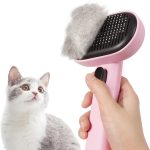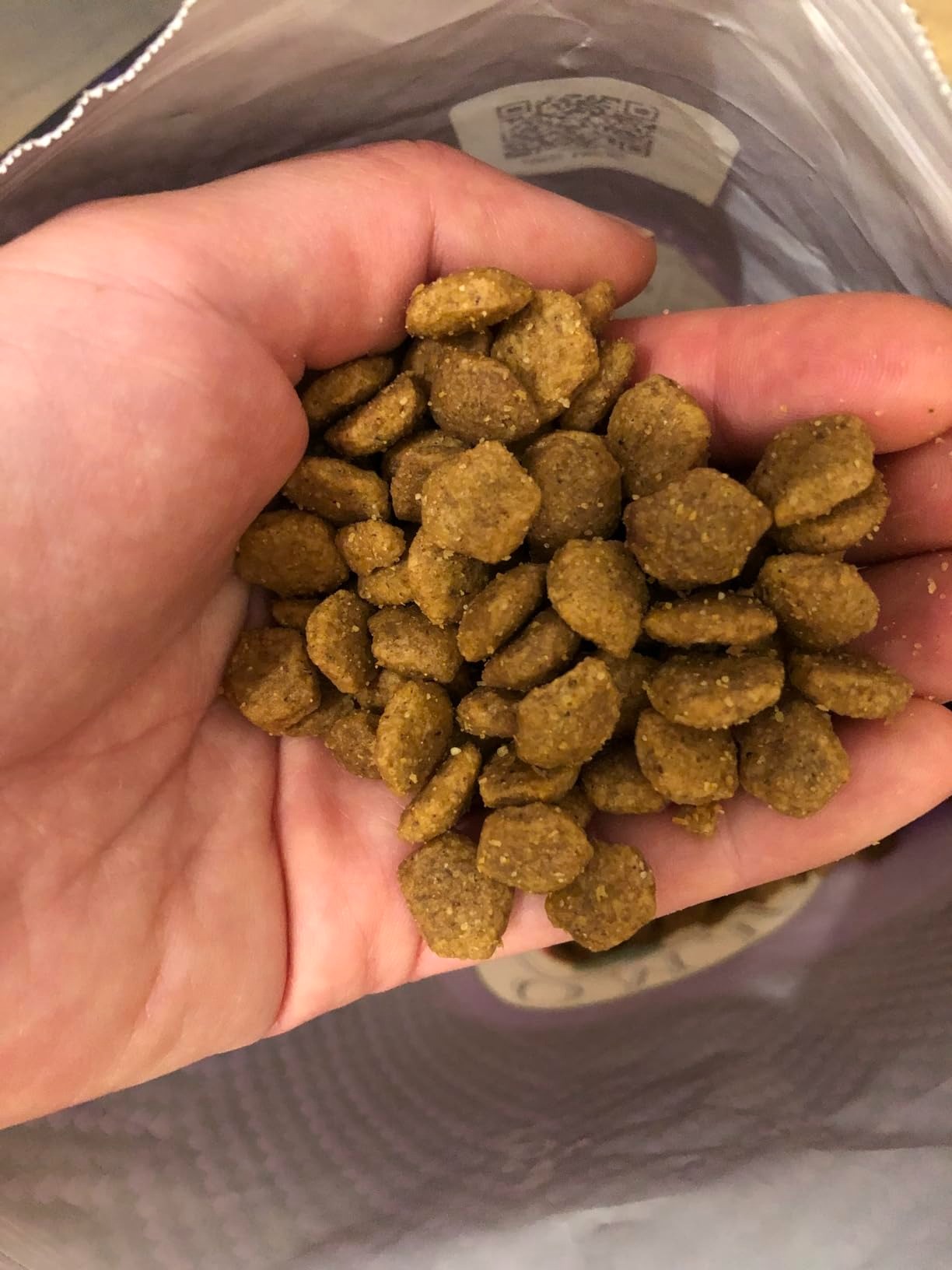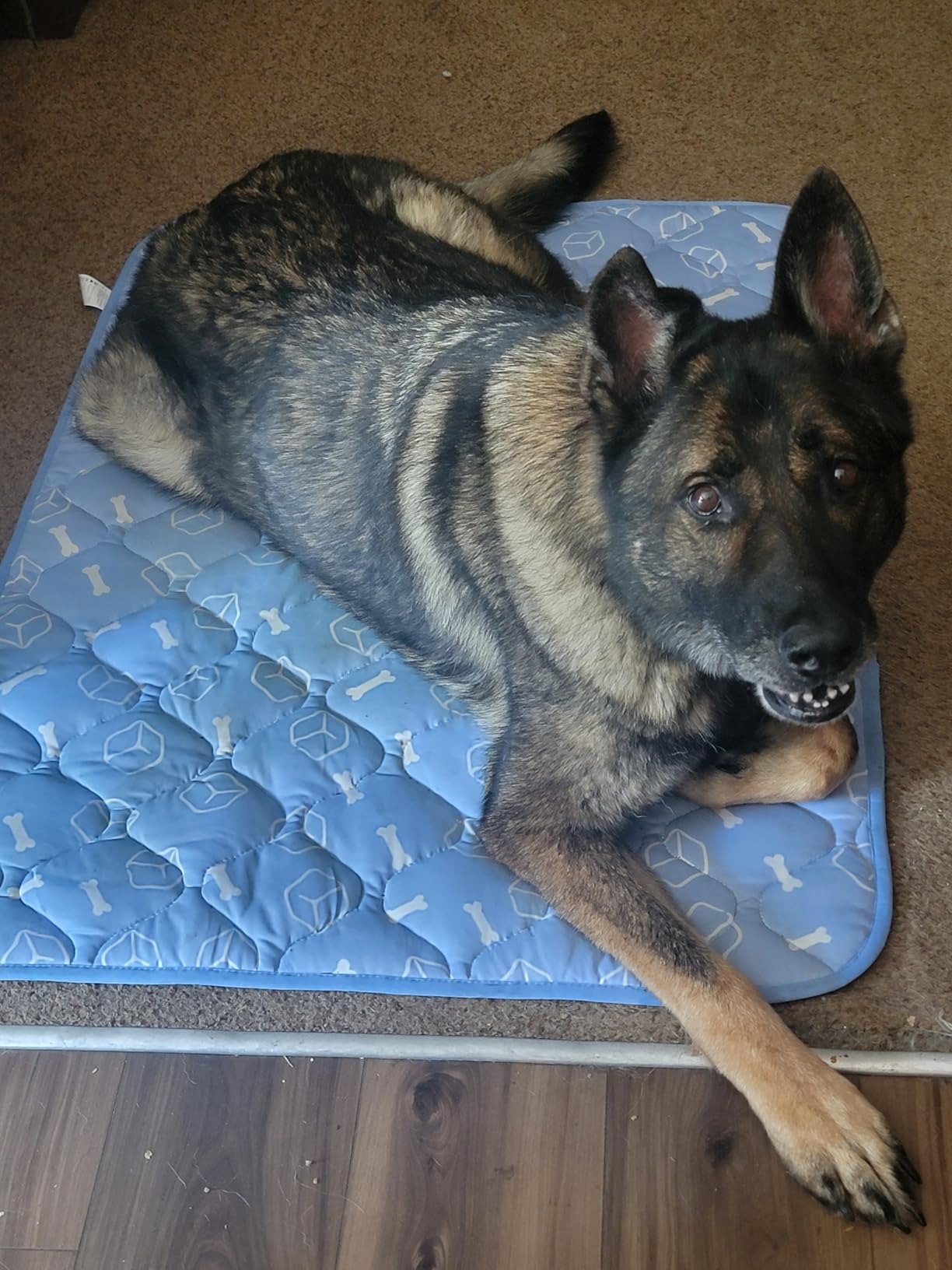The Evolution of Automatic Cat Litter Boxes
The automatic cat litter box has evolved dramatically from basic waste containers to sophisticated smart devices. Early models (1990s–2000s) relied on manual scooping with minimal automation, focusing on odor containment. By the 2010s, innovations like sensors and motorized scoops emerged, enabling hands-off waste removal. Today’s automatic cat litter boxes integrate Wi-Fi connectivity (e.g., Litter-Robot 3 Connect), allowing owners to monitor usage via apps.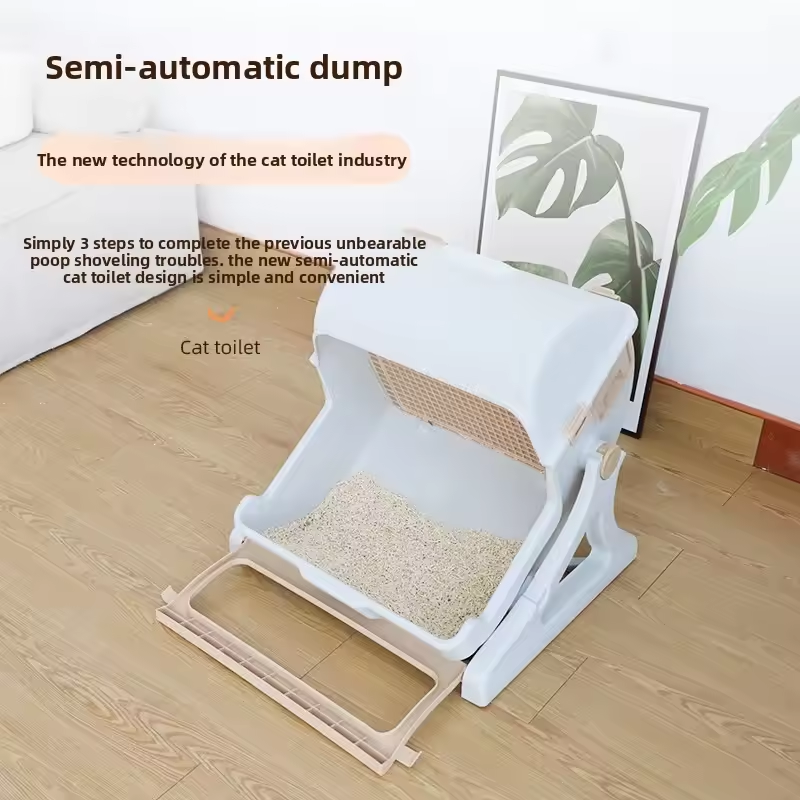
Modern advancements prioritize pet-centric design:
- Noise Reduction: Quieter motors to avoid startling cats.
- Odor Control: Activated charcoal filters and UV sanitization.
- Multi-Cat Compatibility: Sensors that track multiple pets.
Early challenges, like bulky designs and frequent malfunctions, have been addressed through durable materials and AI-driven error detection. Brands now emphasize eco-friendliness, with models using biodegradable litter pods. The evolution reflects shifting priorities—from mere functionality to seamless integration with modern, busy lifestyles.
Investing in today’s automatic cat litter box means embracing a technology that balances convenience, hygiene, and pet well-being—a far cry from its humble beginnings.
Key Features to Look for in an Automatic Model
Choosing the right automatic cat litter box requires evaluating core features that align with your cat’s needs and your lifestyle. Here are the most critical factors to prioritize:
1. Sensor Accuracy
High-quality sensors are essential for timely scooping. Look for models with self-cleaning mechanisms that activate within seconds of use. Optical sensors (e.g., Litter-Robot) detect movement, while weight sensors track entries. Test reviews to ensure reliability—erratic sensors can leave waste unattended.
2. Odor Control Systems
Effective odor management prevents ammonia buildup. Top models use:
- Activated charcoal filters.
- UV sanitization to kill bacteria.
- Air purifiers integrated into units like the Whisker Boots.
Opt for models with replaceable filters and sealed designs to contain smells.
3. Capacity and Size
Large cats or multi-pet households need spacious trays. Aim for a minimum of 24 inches in length to allow comfortable turning. Multi-cat automatic litter box solutions like the Litter-Robot 3+ accommodate up to four cats with ample space and dual sensors.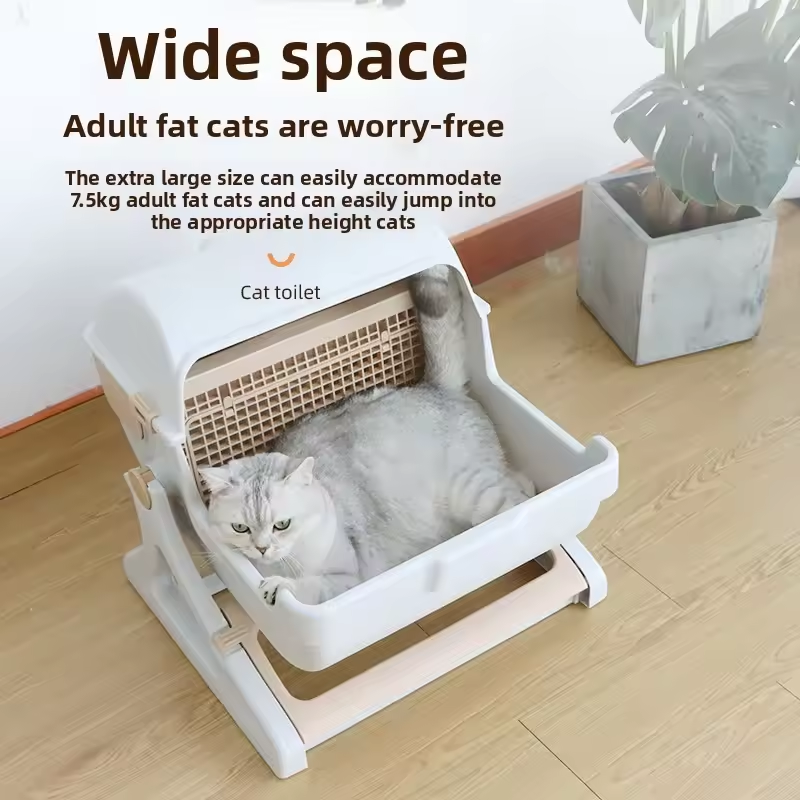
4. Noise Level
Quiet operation is crucial for households or cats sensitive to noise. Models like the CatGenie Elite operate below 45 decibels (similar to a whisper). Avoid loud motors that might scare pets away.
5. Ease of Refills and Maintenance
Look for systems with:
- Pre-packed litter pods (CatGenie) for mess-free refills.
- Removable waste bins that slide out effortlessly.
- Trays that detach for deep cleaning with minimal effort.
Weekly upkeep should take under 10 minutes.
6. Smart Connectivity
Wi-Fi-enabled models send alerts via app when litter is low or sensors malfunction. Some brands even track usage patterns to monitor cat health trends.
By prioritizing these features, you’ll select an automatic cat litter box that balances convenience, hygiene, and longevity—ensuring a stress-free experience for both you and your pet.
How Automatic Litter Boxes Save Time and Reduce Stress
The automatic cat litter box transforms pet care by drastically reducing daily chores and easing tensions for both cats and owners. Here’s how it achieves this:
1. Time Saved on Daily Maintenance
Manual scooping takes an average of 15 minutes daily, but automatic models handle this autonomously. Sensors trigger scooping every 20–30 minutes, removing waste instantly. Over a year, this saves over 20 hours—time better spent bonding with your pet or relaxing.
2. Consistent Cleanliness Reduces Pet Stress
Cats instinctively avoid dirty litter, leading to accidents or behavioral issues. An automatic cat litter box maintains a clean environment 24/7, reducing anxiety for cats. Sensors ensure waste is removed before odors or clumps form, encouraging consistent use.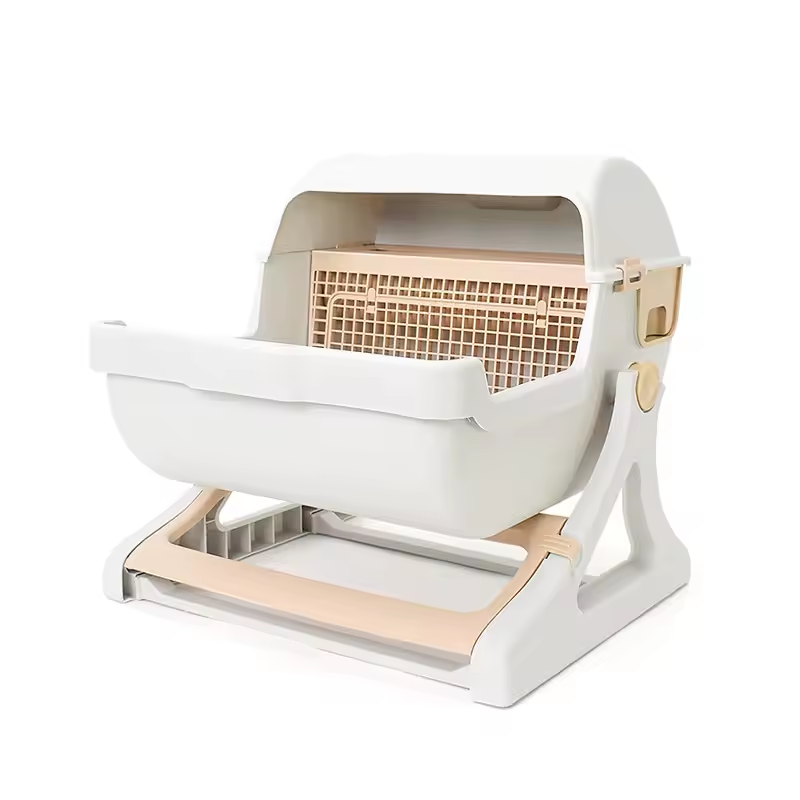
3. Odor Control Mitigates Home Disruptions
Manual boxes often emit ammonia smells, but automatic models use carbon filters, UV sanitization, or air purifiers to neutralize odors. This eliminates the need to hide the box in distant rooms, keeping your home fresh and inviting.
4. Multi-Cat Harmony
In multi-pet homes, automatic units like the Litter-Robot 3+ handle multiple uses without manual intervention. Dual sensors prevent missed scoops, reducing territorial disputes that arise from unclean boxes.
5. Stress Relief for Owners
No longer worrying about daily scooping or sudden messes, owners enjoy peace of mind. Wi-Fi-enabled models send alerts if litter runs low or sensors malfunction, ensuring proactive maintenance.
6. Health Benefits
Consistently clean boxes lower the risk of urinary tract infections, reducing costly vet visits. Cats are also less likely to hold waste, promoting better health.
By automating chores and maintaining hygiene, these devices create a stress-free routine. For working professionals or multi-cat households, the automatic cat litter box is a game-changer—saving time, preserving relationships with pets, and enhancing home comfort.
Design Innovations: Blending Functionality with Aesthetics
Modern automatic cat litter boxes now rival home decor items, merging sleek designs with practicality. Brands are reimagining these appliances as stylish additions to living spaces, not just functional necessities. Here’s how innovation bridges form and function:
1. Furniture-Style Designs
Units like the CatGenie Elite mimic minimalist furniture, with cabinets or side tables that hide the litter mechanism. These litter box furniture solutions blend into modern kitchens or living rooms, offering privacy while maintaining elegance.
2. Material Choices
Premium models use stainless steel for durability and a luxurious look, while bamboo or recycled plastics appeal to eco-conscious buyers. Some brands even offer custom finishes to match room color schemes.
3. Space-Saving Solutions
Compact designs like the Whisker Boots fit undercounters, while modular systems allow multi-box setups without clutter. Wall-mounted options save floor space in small apartments.
4. Hiding Sensors and Mechanisms
Advanced models conceal wiring and sensors behind clean lines. The Litter-Robot 3+, for instance, has a lidless design with a discreet scoop mechanism, avoiding bulky aesthetics.
5. Customization Options
Brands like PetSafe offer color choices to match decor. Some models, such as the CatGenie, include removable panels for personalized styling.
6. Smart Integration
Units with LED lights or touchscreens add tech flair, while noise-dampening materials ensure they operate quietly in open spaces.
By prioritizing aesthetics, these innovations make the automatic cat litter box a seamless part of your home—no longer an eyesore but a thoughtful design element.
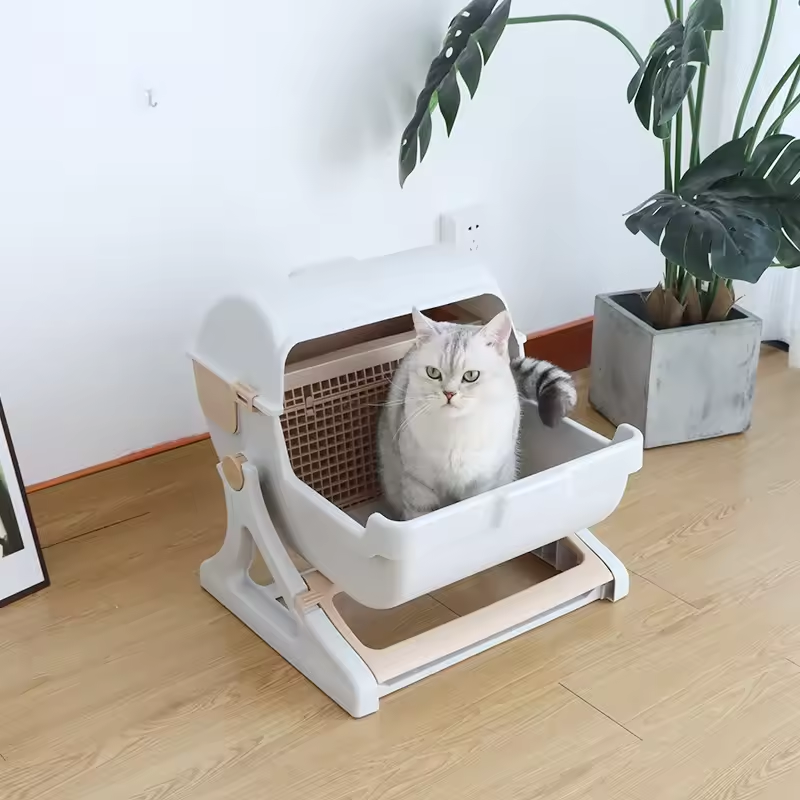
Maintenance-Free Living: Cleaning and Refills Made Simple
The automatic cat litter box redefines convenience by minimizing upkeep, turning litter management into a hassle-free routine. Here’s how it streamlines cleaning and refills:
1. Daily Self-Cleaning
Sensors trigger scooping every 20–30 minutes, removing waste and clumps automatically. Systems like the Litter-Robot’s “tornado” mechanism or the CatGenie’s rotating tray ensure litter stays fresh without manual intervention.
2. Easy Waste Disposal
Most models feature:
- Sealed Waste Bins: Removable trays store soiled litter for quick disposal (empty weekly).
- Biodegradable Pods: CatGenie’s pre-packed litter pods dissolve waste, requiring no manual scooping.
- Bagged Systems: The Whisker Boots uses disposable bags for mess-free removal.
3. Odor-Neutralizing Technology
UV lights (e.g., PetSafe LitterGenie) sanitize surfaces, while charcoal filters eliminate odors. This eliminates the need for harsh chemicals or frequent deep-cleaning.
4. Smart Refill Systems
- Pre-Loaded Litter Pods: CatGenie’s 6-week pods reduce refills to once monthly.
- App Alerts: Litter-Robot Connect notifies owners via phone when litter is low.
- Manual Refills: Simply add clumping litter to the tray every 2–3 weeks.
5. Deep-Cleaning Made Quick
Most units detach trays for easy scrubbing. For example, the Litter-Robot’s stainless steel tray cleans with soap and water in 10 minutes—no harsh scrubbing required.
6. Multi-Cat Efficiency
Models like the Litter-Robot 3+ handle heavy usage with large waste bins, needing fewer refills than traditional boxes.
By automating chores, the automatic cat litter box frees up hours monthly. This maintenance-free approach ensures a clean environment with minimal effort—ideal for busy lifestyles or pet owners who prioritize simplicity.
Multi-Cat Households: Solutions for Peaceful Coexistence
Managing multiple cats demands strategic use of the automatic cat litter box to avoid conflicts. These solutions ensure harmony in multi-pet homes:
1. Quantity Matters
Follow the “one box per cat + one extra” rule. For three cats, provide four boxes to prevent territorial disputes. Distribute units across floors or rooms, ensuring no cat monopolizes access.
2. Opt for Multi-Cat Models
Choose multi-cat automatic litter box solutions like the Litter-Robot 3+, designed with dual sensors to track multiple pets simultaneously. Its 24-inch tray accommodates large breeds, while waste bins empty separately to reduce odor triggers.
3. Strategic Placement
Position boxes in separate zones, avoiding clusters. Cats prefer quiet corners but need easy access. Use self-cleaning automatic cat litter boxes with sealed designs to minimize odor spread.
4. Privacy and Space
Enclosed units like the Whisker Boots offer privacy, while open models like the Litter-Robot allow escape routes. Ensure each cat has space to dig and turn without feeling trapped.
5. Monitor Behavior
Watch for cats avoiding boxes due to bullying. If tensions arise, add more boxes or separate dominant and shy pets into different rooms.
6. Regular Deep Cleaning
Multi-cat boxes require weekly tray scrubbing to prevent bacteria buildup. UV-sanitizing models reduce manual effort while maintaining hygiene.
By prioritizing quantity, placement, and design, these automatic cat litter boxes create a stress-free environment where every cat feels safe.
Top Brands and Budget-Friendly Options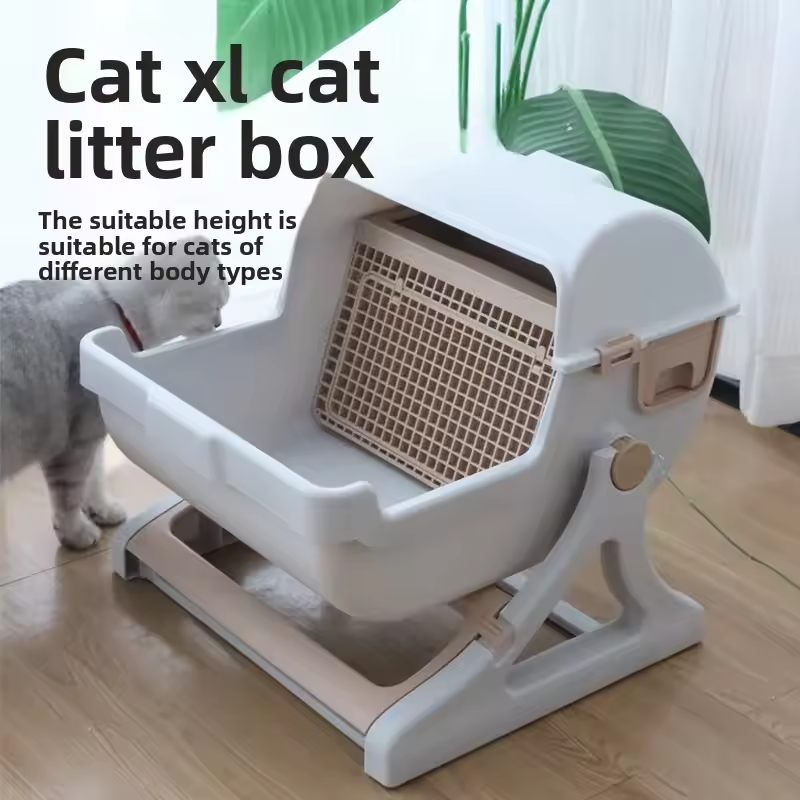
When choosing an automatic cat litter box, brands vary widely in price and features. Here’s a guide to top performers and budget picks:
Premium Picks
- Litter-Robot 3 Connect ($400+): A leader in durability with Wi-Fi connectivity, dual sensors for multi-cats, and a sleek design.
- CatGenie Elite ($500+): Combines medical-grade filtration with furniture-style aesthetics, using biodegradable pods.
Mid-Range Options
- Whisker Boots (250–300): Quiet operation, UV sanitation, and disposable bags for easy cleanup.
- PetSafe LitterGenie (200–250): Affordable UV sanitization and odor control, ideal for single or small multi-cat homes.
Budget-Friendly Models
- TidyCat Smart Cat Box (150–200): Basic auto-scooping with manual litter refills.
- PetSafe ScoopFree ($150+): Uses flushable litter and odor-neutralizing crystals for minimal maintenance.
Key Considerations
- Durability: Litter-Robot and CatGenie last 5+ years with proper care.
- Noise: Opt for the Whisker Boots (45 dB) if noise is a concern.
- Multi-Cat Needs: Litter-Robot 3+ handles up to four cats, while budget models may require extra units.
Even budget models like the TidyCat Smart Cat Box reduce manual chores, making them worthwhile investments for those prioritizing cost.
Long-Term Benefits and Cost-Effectiveness
Investing in an automatic cat litter box yields significant long-term advantages. While upfront costs range from 150to600, the savings and convenience justify the investment:
1. Reduced Litter Costs
Self-cleaning mechanisms minimize litter waste by up to 70%. For example, the CatGenie’s biodegradable pods cut litter spending by 100–200 annually compared to traditional clumping litter.
2. Lower Vet Expenses
Consistently clean boxes reduce urinary tract infections and digestive issues, avoiding costly treatments. A $500 unit can pay for itself within two years through medical savings alone.
3. Durability and Low Maintenance
Premium models like Litter-Robot last 5–7 years with minimal repairs, outperforming disposable litter trays. Maintenance-free operation saves time and effort over their lifespan.
4. Eco-Friendly Impact
Units using recyclable litter or energy-efficient motors reduce environmental waste.
5. Multi-Cat Value
For households with three cats, an automatic cat litter box costs 40% less per year than maintaining three manual boxes and litter.
While initial costs vary, the automatic cat litter box delivers measurable ROI through reduced expenses, improved pet health, and lasting convenience.




